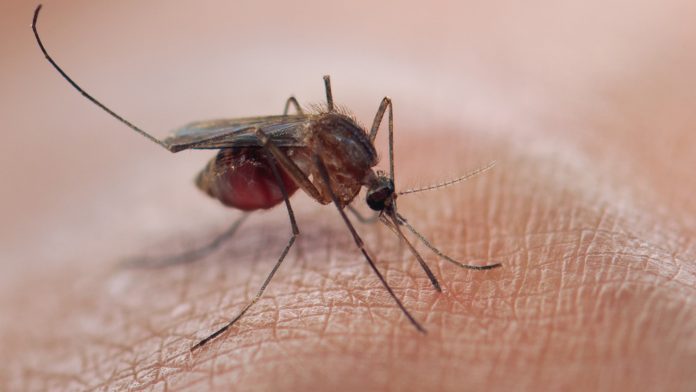
A team of scientists in Kenya has uncovered a new microbe that may effectively mitigate malaria transmission, creating new methods to combat the deadly disease.
In a new study, the researchers identified that a microbe – called Microsporidia MB – may be the key to blocking malaria transmission, as it is transferred between male and female mosquitoes during mating but is also proficient at blocking reproduction. The team believe that releasing it strategically into the mosquito population could be the key to controlling the dissemination of the disease, a monumental advancement in reducing deaths caused by it.
The study is published in Frontiers in Microbiology.
Jeremy Herren, a co-author of the study and a research scientist at the International Centre of Insect Physiology (icipe), in Kenya, said: “This finding is of major significance because it indicates that Microsporidia MB could be deployed as a tool to control malaria. However, for Microsporidia MB to be a viable tool, researchers will have to find a way to spread it into mosquito populations.”
Stalling progress in combatting malaria transmission
Throughout the last two decades, malaria transmission has declined considerably due to the increasing sophistication of crucial malaria control tools, such as bed nets and antimalarial medications. However, efforts to completely eliminate the disease are stagnating. One of the main reasons for this is that mosquitos have developed a stronger resistance to insecticides utilised in treated bed nets, meaning that new, effective disease control methods are required more than ever.
“This study is, therefore, an important step towards the development of a completely new and potentially transformative strategy to control malaria,” Herren said. “The burden of malaria presents a major challenge for development goals in Africa. Over 90% of global malaria cases and deaths occur in Africa, which has enormous societal and economic consequences.”
Potential of the Microsporidia MB microbe
To conduct their investigation, the researchers carried out extensive experiments on mosquitos in laboratory conditions, employing specialised tools to identify which individual mosquitoes were carrying Microsporidia MB.
Following this, the team used a fluorescence microscopy technique, which enabled them to study Microsporidia MB in the ovaries and testes the mosquitos. The team is now working on these results to design a concrete strategy to spread Microsporidia MB throughout the mosquito population in an effort to manage malaria transmission.
Herren said: “We are exploring the feasibility of releasing male mosquitoes laden with Microsporidia MB in areas of high malaria transmission. These males would continue with their natural life cycle, infecting wild female mosquitoes with the microbe, which would, in turn, infect their offspring with the malaria blocking trait.”
The specialists believe that due to the microbe being transmitted between mosquitos of the opposite sex during reproduction, that this will make it easy to make the control intervention spread widely and rapidly throughout the population.
Brian Tarimo, a research scientist at the Ifakara Health Institute in Tanzania, said: “This makes its deployment to the field much easier as it doesn’t require human compliance or behavioural change. Furthermore, Microsporidia MB doesn’t come along with a fitness cost in mosquitoes. This means that the chances of developing resistance against it is very slim to none.”
Utilising the microbe as a strategy of curbing malaria transmission would be feasible but would require effective collaboration with policymakers, regulators, and community members, the team have expressed. They are now calling on policymakers in malaria-endemic parts of the world to employ the findings to develop a new tool to control malaria transmission.
Tarimo said: “Trends show that there is a plateau in the reduction of malaria cases while in some areas there is an increase. Therefore, novel control tools being developed have to be seriously considered for addition into the control toolbox.”










